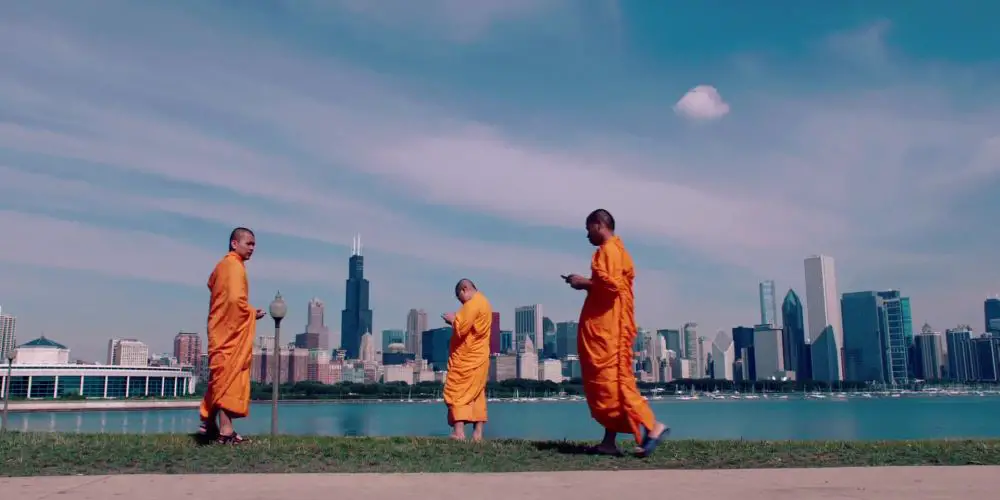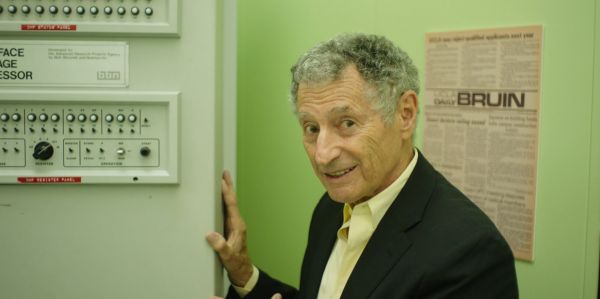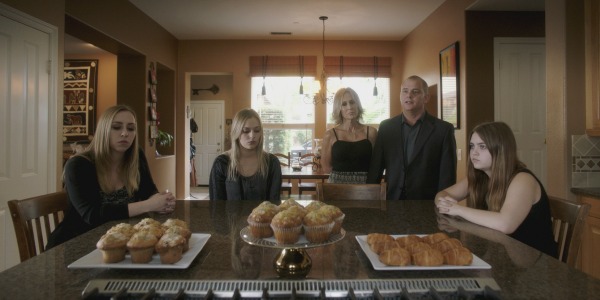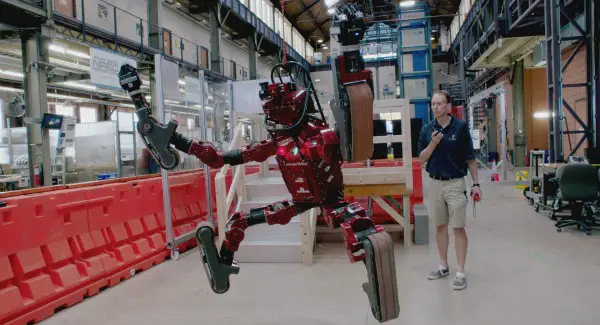LO AND BEHOLD, REVERIES OF THE CONNECTED WORLD: Future’s. Made Of. Virtual Insa-nity

Arlin is an all-around film person in Oakland, CA. He…
In the fifties, Tex Avery made a series of shorts for MGM collectively called “The World of Tomorrow” in which the animator imagined what wonders the kitchen appliances, automobiles and society of the future will offer. The cartoons present with one fantastical gadget after another, all quite utilitarian, but with tongue firmly planted in cheek. The message is clear, technology may be our salvation, but left in the hands of man there will always be something to muck up.
Werner Herzog‘s new documentary Lo and Behold: Reveries of the Connected World is structured quite similarly, offering the viewer a comprehensive tour of the history of the internet, its ramifications for modernity, as well as the future it may beget. Only here, mixed in with the wonders of the digital age are also some of the horrors that it has wrought, as well as some that have potential to become reality.
Even still Lo and Behold manages to be the funniest film I’ve seen so far this year, bringing Herzog’s singular wit and powerful filmmaking to a topic over pretty much all of our heads.
New Themes, Same Mastery
The film is structured in chapters, as many of Herzog’s have been. In this instance, the divisions takes on a biblical feel, and from the first scene sets up the documentary as a spiritual exploration. Beginning in UCLA, in an unglamorous hallway Herzog relishes in ridiculing in his voice-over, internet pioneer Leonard Kleinrock recounts the humble origin story of the first network connection: big bang and creation myth rolled into one.

From here the film is free to explore wherever its director’s natural inclinations take it: from a totally net-free company centered around one massive piece of technology infrastructure and solar flares, to more trendy topics such as internet harassment, robots and planetary relocation.
It is interesting to note that Lo and Behold is a commissioned work. NetScout approached Herzog about making a film on the internet, perhaps not realizing his lack of personal experience with the web. But make no mistake, this is a singularly Herzogian film, and his perspective on the subject as an outsider likely lent a lot to film’s potent universality, as well as it’s lighthearted approach to the subject matter.
Though the director is known for dealing with stories of humanity’s ongoing yet futile struggle to dominate nature, his sensibilities and visual aesthetic are well served by this atypical topic. It’s apparent just by watching the film that Herzog truly enjoyed making it, holding back laughter as he praises a subject for his entrance or inquires as to another one’s level of affection for an automaton dubbed simply “Robot 8”, in the way that only he can.
The one exception is in the chapter occupied by the Catsouras family, whose tragic story is at once both shocking and all too commonplace, and whose weight is enough that the rest of the film can mostly go on in a state of levity.

Herzog famously rejects the notion of an “objective truth”, that would be destroyed by the inclusion of his voice, in favor of what he calls “ecstatic truth”. Recognizing that there can be no wholly honest representation of reality within the entirely constructed environment of a documentary shoot, the director has never given a second thought to inserting himself into his films through narration or conversation with subjects.
What that technique achieves in this film in particular is to take the sometimes technical, stodgy ruminations on interconnectivity and technology from many of the field’s innovators and foremost thinkers and center them to make them easily understandable.
From his wry, deadpan commentary to his signature floating, hand-held close ups, not to mention that idiosyncratic blend of humor with the macabre, one could walk in at any time at realize nearly instantly that this is the work of the man who has come to be America’s foremost documentarian, despite the new subject matter.
The shift in focus from nature to technology perhaps is perfectly suited for Herzog, as we enter an age where we may be grappling as much with our own creations as we have through history with that which created us.
A Fork in the Road
Lo and Behold manages to articulate a lot of sentiments I feel are ever present yet rarely fully expressed regarding our relationship to the internet and modern technology. The internet has drastically altered our lives, in many ways for the better (how else would you be reading this, for instance?), but it’s hard for something so widely adopted to be without its own unique problems.
With instant information, ease and convenience come isolation, labor exploitation and addiction. Though the film takes no hard lines on the utility of the internet, what one takes away from it will likely depend largely on their own degree of digital anxiety.
The film’s biblical structure comes to reflect its subject; as the interviewees for the later chapters begin to have dialogues with those prior, it’s as if the film is teaching itself, learning on its own, and coming to some grand realizations no component part would have been capable to achieve individually.

The score is freeform, just as Herzog‘s camera often is, weaving in and out of interviews, seemingly trying to find itself just as the film and its subjects are, not to mention the director and audience. Thus is Lo and Behold the most beautifully constructed and fully realized documentary I’ve had the pleasure of watching so far this year.
Conclusion
In a century or two, our robot overlords may look back at this film as a quaint document their creators flailing through anachronistic technology and unknowingly engineering their own destruction.
As we prepare for ongoing climate change, bio-technology and advancing AI, with a future as uncertain as the potential is bright, Lo and Behold: Reveries of the Connected World serves as a check in for our species.
Hopefully the film helps us to be more conscious of the changes taking place and the vulnerabilities of living in a world whose machinations are increasingly controlled by technologies we don’t understand. In the meantime, it never hurts to laugh to keep from crying.
Where do you stand on the internet? Savior or Destructor?
Lo and Behold: Reveries of the Connected World is in theaters and available on streaming platforms now.
Does content like this matter to you?
Become a Member and support film journalism. Unlock access to all of Film Inquiry`s great articles. Join a community of like-minded readers who are passionate about cinema - get access to our private members Network, give back to independent filmmakers, and more.
Arlin is an all-around film person in Oakland, CA. He received his BA in Film Studies in 2010, is a documentary distributor and filmmaker, and runs Drunken Film Fest Oakland. He rarely dreams, but the most frequent ones are the ones where it's finals and he hasn't been to class all semester. He hopes one day that the world recognizes the many values of the siesta system.













